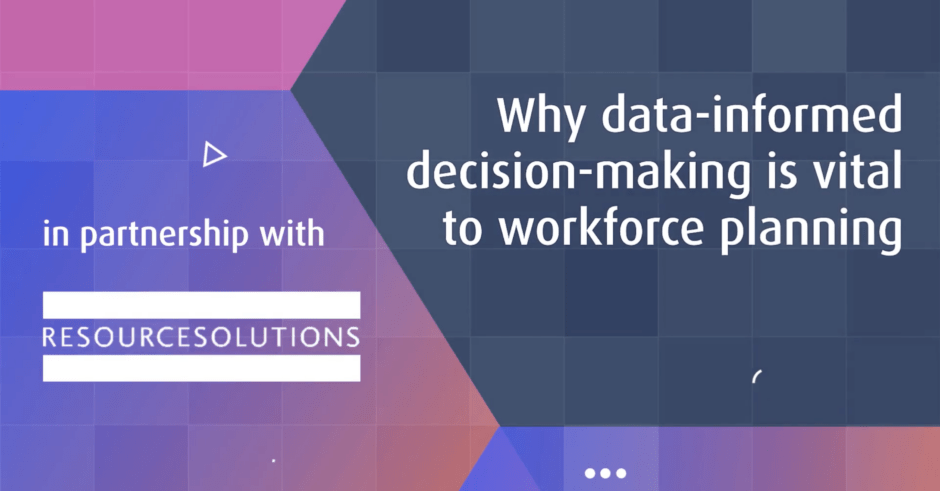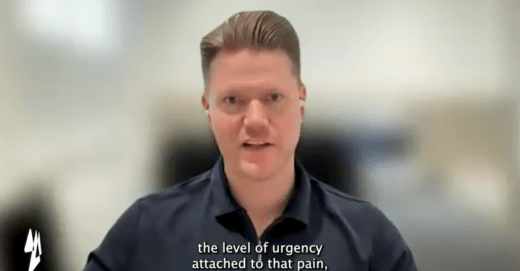The world of work is changing at a rate that not even the brightest in industry could predict and a large portion of the change is truly for the better. Planning for the future is undoubtedly one of the biggest challenges that organisations face due to the turbulent nature of the market and the unpredictability of the economic climate so what can organisations and their leaders do to make strategic decisions that benefit their organisations into the future?
The evolving technological landscape has put increasing value on the use of data and its ability to have a positive impact on the strategic decisions that businesses need to be making. Workforce planning has been at the forefront of the People agenda for a number of years but with stats being released such as ‘9 out of 10 employees need some sort of reskilling by 2030’ (Confederation of British Industry, 2020), organisations need to understand the skills their business has within it currently and the skills they will need in the near future. Data is the answer and creating data-informed decisions as the basis for your Strategic Workforce Plan is a must.
The BTN recently partnered with Resource Solutions, specialists in Recruitment Process Outsourcing (RPO), for an exclusive virtual roundtable on ‘Why data-informed decision-making is vital to workforce planning’. The conversation was an interactive and open discussion with senior People leaders across industry.
The discussion touched on a variety of topic but the main 3 themes to come out of the conversation were as follows:
Find where your skills demand is being initiated
There needs to be a visionary in the organisation to lead how the workforce is going to morph and change. Who is driving this workforce change? Is it the innovators? Is it your Executive Team? Is it your clients? Is it your competitors?
Is your strategy driving the headcount of your business or does your headcount drive your strategy?
One example of where a specific skills demand may be coming from was from a client partner within professional services. One of the attendees highlighted that their client is now requiring a different type of skills whereby deeper technology & digital skills are prominent and therefore the talent that was previously doing the role either need to up-skilled quickly and at scale or new talent needs to be assigned, either from internal or external sources.
The driver for the SWP agenda is one that has been discussed in detail as many BTN events previously and the answer is never the same for everyone but the outcome of not building a strategic workforce plan is regularly around the conversation that “if you don’t do this now, you may have an attrition problem in X years”.
The group agreed that a lot of the strategic decisions made around SWP were about hiring but it’s not just about the people we need but providing the support to those people within our organisation and figuring out what they need.
Data is only as powerful as the decision it enables
Take a step back from trying to ‘do SWP’ and look at the business problem that is trying to be solved. There has been a real cultural shift around SWP and the role of data in enabling that so we need to make sure we are making decisions that are based on quality data that is of value.
There was a conversation around the role of early talent and the ROI of specific early talent channels and how to align SWP with this part of the organisations. Can we develop out a focus on early talent around the critical skills that we need going forward? If we understand that specific digital skills and learning agility will be pivotal for future organisational success, we can determine what potential capability exists in our organisation and then start to look at where we can’t fill.
The wider discussion commenced with a simple question of what skills should an organisation be measuring, the hard or soft skills of their employees? The group was represented by a variety of organisations who were at very different stages of their SWP journeys with some already having done an analysis of the skills at their disposal within the organisation, some having invested in a product but not seen it being used to its full potential and some still thinking about what the journey looks like for them.
There was a multitude of ideas such as using technology to look at job adverts, reward appraisals and CVs and using passive data to provide the organisation with skills data so as a leader, we can understand very quickly that if someone has X skills for X project, we don’t need to outsource talent as there is talent internally. There was a presumption in the reliance of the technology but if this was incorporated with a user interacting with the skills platform to gather data, the organisation ends up effectively building their own internal ATS with their own employees inside. This could create a future landscape for businesses, where employees don’t see new role ‘opportunities’ only externally but start to see internal movement as an opportunity also.
HR may want to take the business on an SWP journey and start collating skills data but the end goal will only be met if the business knows the North Star and the problem it solves from the start.
When does niche become the norm in terms of skillsets?
90% of the global workforce requires retraining by 2030 so skills are definitely the new currency. With such a large variety of skills (hard & soft) across workforces being needed for the future, create rigour and process around what the workforce looks like in 3,5 & 10 years and align the skills you have already with those your business needs in the future.
The group agreed that there are lots of potential barriers to people wanting to be ‘unskilled’, so we need to create communication channels that portray the message for change at all stages and ensure accessibility of platforms for learning do not create any more dissonance. What are the transferable elements of the skills our employees have? Is it all about hard and soft skills? Where does learning agility come into the equation? If our employees can embed real learning agility into their skillsets, they can then learn to do X, Y & Z.
Bringing in policies such as being location agnostic can help to facilitate internal movement with little pushback and having clarity and visibility on career maps can showcase to employees the availability of where they could potentially move within an organisation.
The phrase ‘skills is the new currency’ may be overused but that’s only because there are now so many skills and so many new roles.
Strategic workforce planning can become proactive workforce planning if those running the projects start to work closely with the business movers and having relationships internally, then they will start to gain an understanding of where the business is going so they can plan for future movers. To truly understand where the business needs to go, we need to stop trying to do Strategic Workforce Planning and look at the business problem and understand what the business is doing wrong. Create a consumer-centric workforce plan and reap the benefits.
About Resource Solutions
Resource Solutions is a provider of Recruitment Process Outsourcing (RPO) and Managed Service Provider (MSP) solutions. As part of the Robert Walters Group – a world-leading specialist professional recruitment consultancy, our business has considerable resources at its disposal. With a global footprint across 29 countries, we’re able to work in close partnership with organisations and manage everything from global accounts with demanding resourcing strategies to single sites with lower recruitment volumes.




